Most SEOs know the difference between short-tail and long-tail searches. In local SEO, we take it further by giving these search term types another name: implicit and explicit searches.
Applying this concept to your local search strategy can help improve your local rankings and drive leads from Google Maps with arguably less effort. Here’s how knowing the difference can help you get better results in local search.
Implicit vs. explicit search in local SEO: How do they differ?
An explicit search is a search where the user adds a location in their search phrase, such as “car accident lawyer Philadelphia.”
While an implicit search is when the user does not add a location modifier to their search phrase, such as “car accident lawyer.”
Simply put:
- An implicit search is a short-tail or general search.
- An explicit search is a location-modified, long-tail search.
Google can show radically different search results depending on the location modifier a user adds to their search and the user’s physical location at the time of the search.
Generally, this difference is less prevalent in organic SERPs.
In Google Maps search results, however, the difference between an explicit vs. implicit search is more stark and an element every local SEO must pay attention to.
Why do implicit and explicit searches matter?
One search type is much easier to rank and optimize for than the other. This is due to how Google treats local search results based on their local ranking factors.
Google continually aims to deliver the best search results by considering a combination of these key factors:
- Relevance: How well a business matches the user’s search intent. Google uses a mix of information the business provides on its Google Business Profile (GBP), website and other online sources.
- Distance: The business location’s proximity in relation to where the user is searching. This comes into play less with explicit searches compared to implicit and “near me” searches.
- Prominence: How well-known the business is online and offline. This includes review count and rating.
Relevance and prominence are factors we can more or less influence with marketing efforts. Distance is a fixed factor that we cannot change unless we physically move the address of the business – something most businesses are less than willing to do.
While relevance and prominence are important, proximity to the searcher is the top local search ranking factor, beginning with the 2016 Possum update. As such, ranking for implicit keywords across a large service area or in a competitive city is virtually impossible.
This changes when a user adds a location modifier to their search, as Google will not use a user’s location as the center radius for the particular search.
Instead, Google will use the center point of the location added to the search as the center of the search radius.
This makes the proximity/distance factor less influential and allows you to strategically go after various keywords.
See the examples below of a search for “auto insurance agency” vs. “auto insurance agency new york.” (My location extension is set to ZIP code 10007 for both searches.) The results differ significantly.
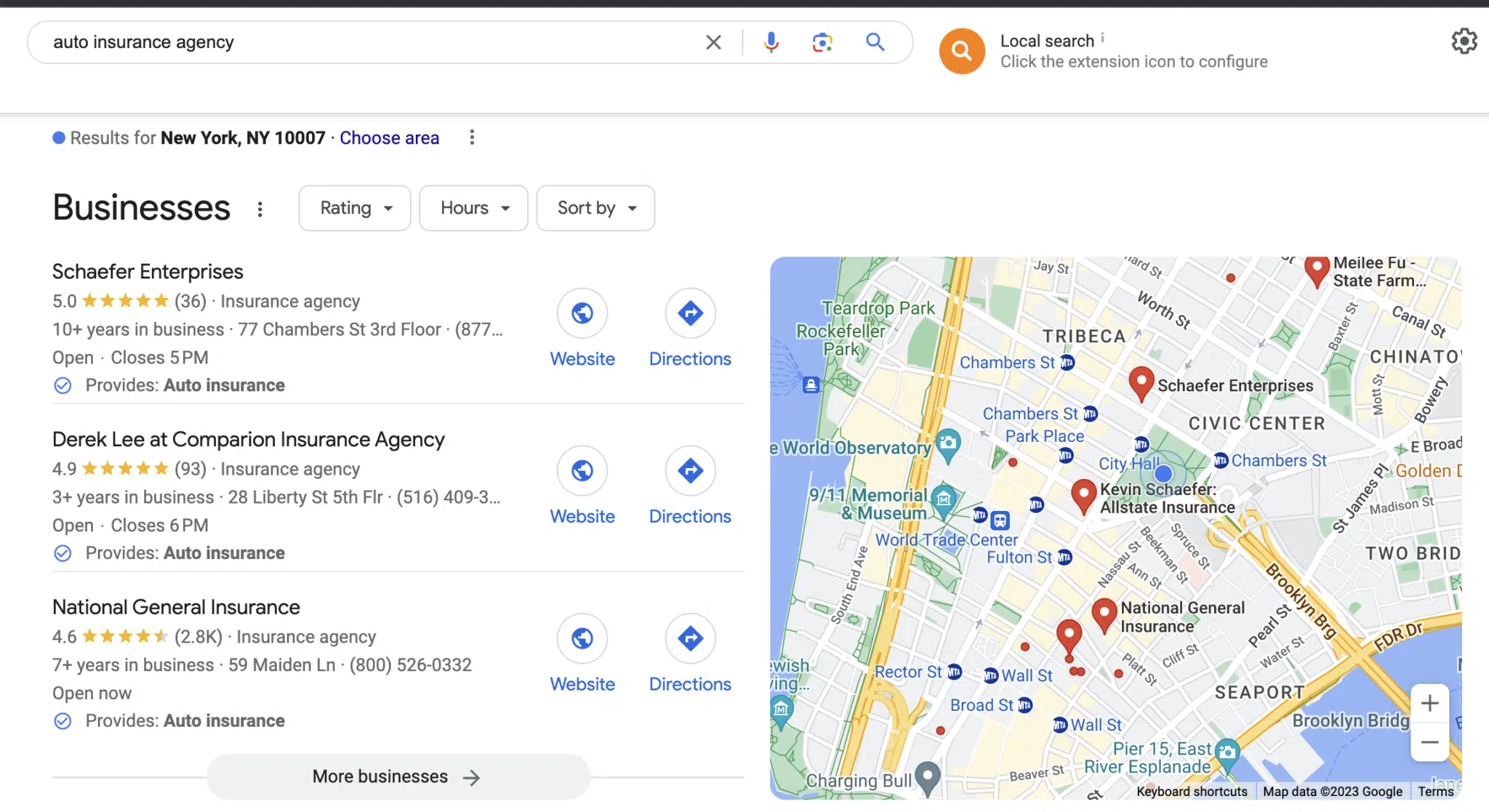
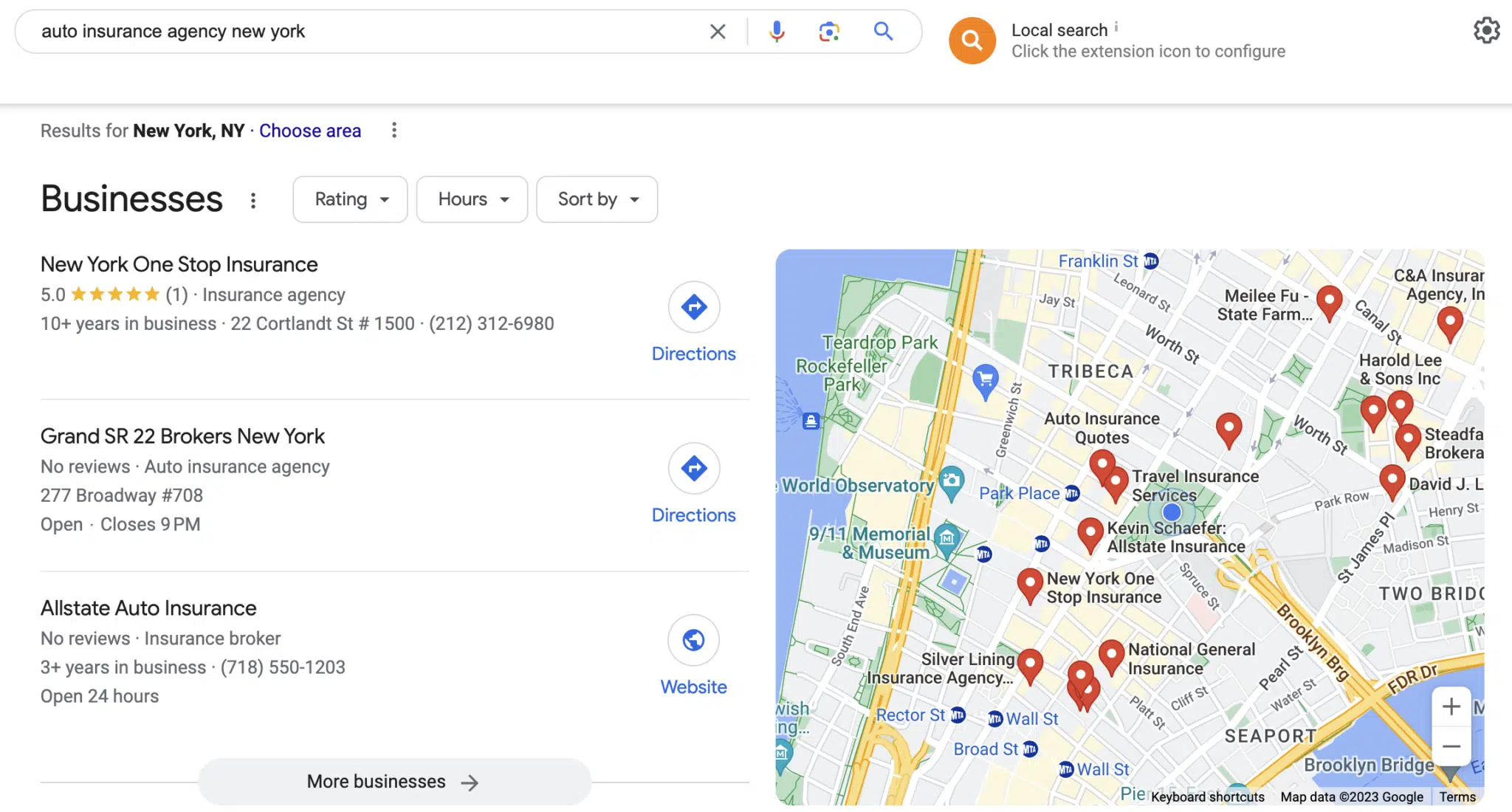
Figuring out which keywords you can dominate by using this key metric
Now that we know Google ranks businesses differently based on where the search is done and whether location modifiers are used, let’s dig into how you can effectively strategize your local SEO with this information.
I use Share of Local Voice (SoLV), a metric for determining “how frequently your listing shows up in the Map Pack per a given scan radius. The greater the SoLV, the greater your local search visibility,” according to Local Falcon’s website.
With SoLV, you can effectively determine how well your business dominates the market for your target keywords. You can also do this for your competition to see how well they dominate the market for your target keywords.
This is an invaluable metric that can show you what is actually possible when it comes to opportunities for local ranking and traffic improvements for all your keywords in your given market.
Get the daily newsletter search marketers rely on.
When Share of Local Voice saved the day
I once had a locksmith client who was obsessed with ranking for the term “locksmith” because it has 10x the search volume of the explicit versions of the keyword, like “locksmith near me” or “locksmith [city]”.
The U.S.-based client was located in the middle of a major metropolitan area, surrounded by tons of competitors, in an already competitive industry. Talk about a trifecta.
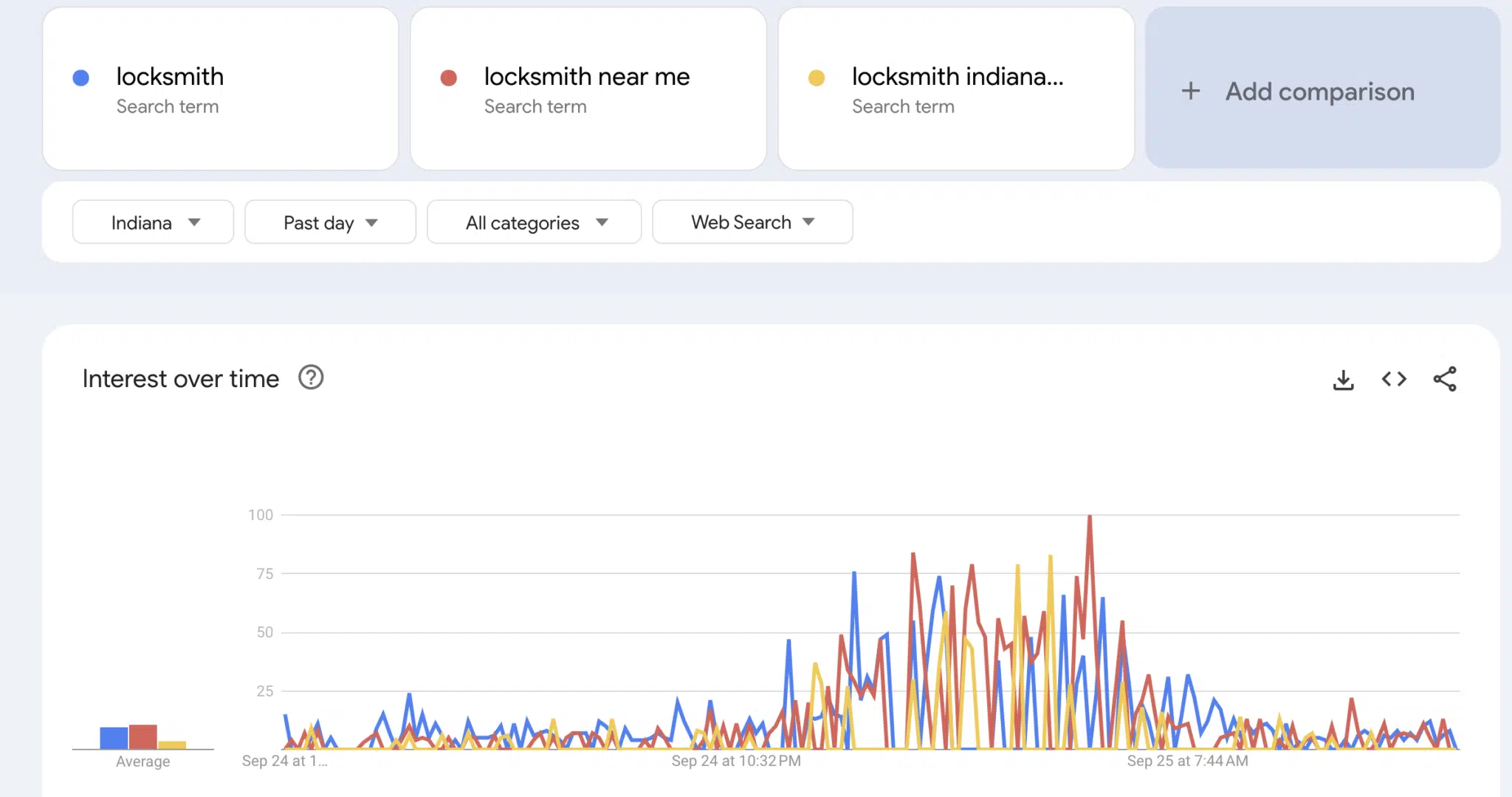
Though the client was technically correct about the search volume, as a seasoned SEO, I knew there was no way we would dominate map rankings in their city for “locksmith” with just one GBP listing, no matter how hard we tried.
He was far from convinced and insisted we not ”waste time” with low search volume keywords when his listing was barely ranking for “locksmith” across his service area.
This caused us to investigate how many opportunities there actually was for their listing to improve for “locksmith”.
We looked at their biggest competitors in the market and found that none of them could dominate the market for “locksmith” with one GBP listing.
Below is the SoLV for “locksmith” for our client vs. their top competitor.
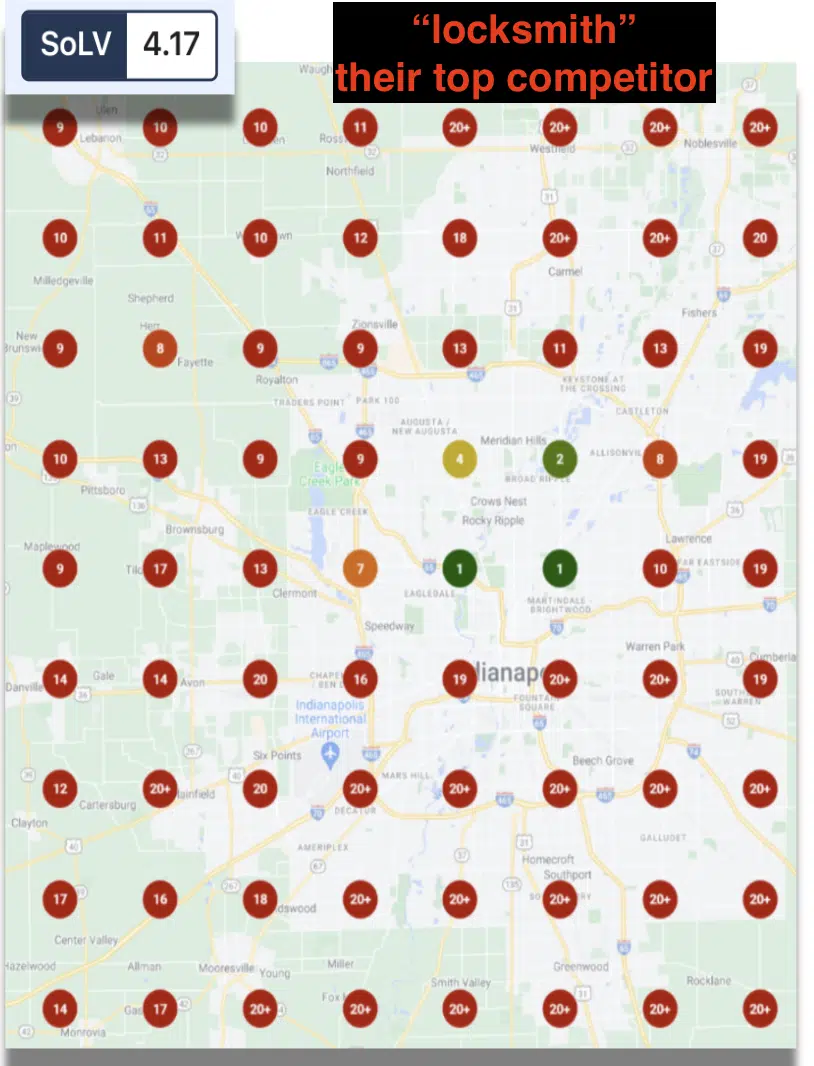
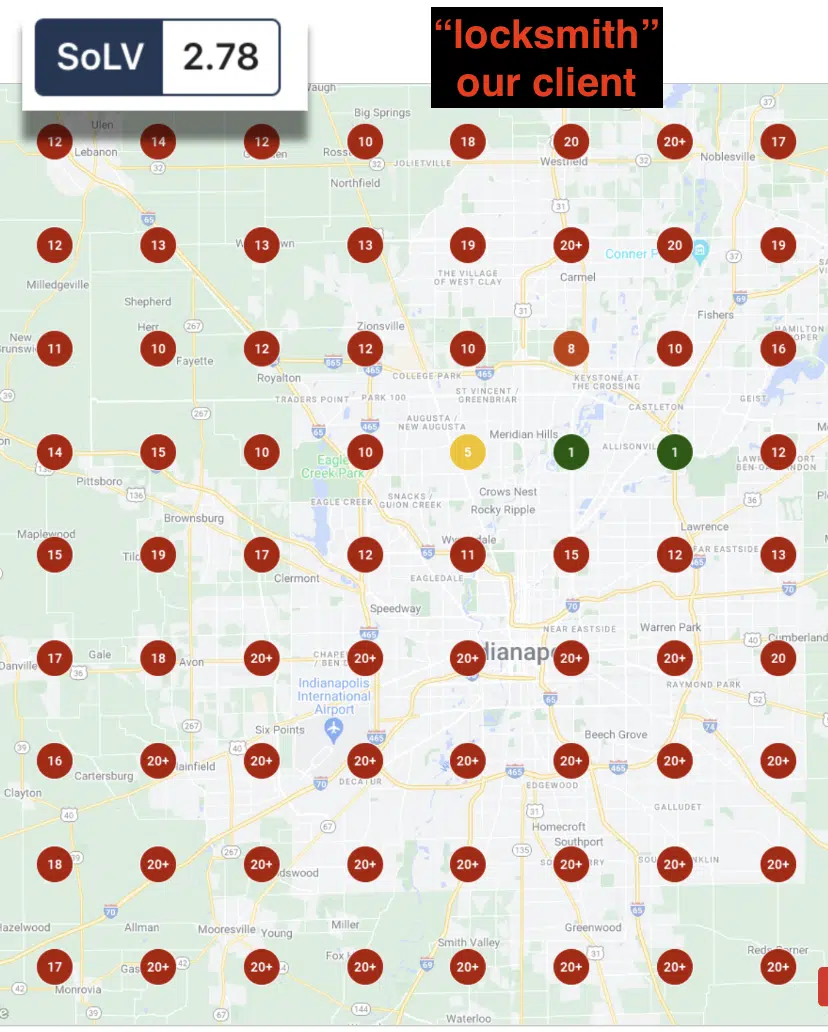
The screenshots show limited room for growth as the top competitor has one more green pin than him. In reality, that’s not enough of a growth opportunity.
To double down on unrealistic expectations, the client was also insistent we increase leads by 20%, a lofty goal we could never hope to achieve if we just went after “locksmith.”
Thus, we pivoted to optimizing their GBP and website for less competitive keywords like “locksmith [city]” and “emergency locksmith.”
We did this largely through:
- On-site optimizations for long-tail keywords.
- Optimizing the categories and services on their GBP listing.
From this long-tail strategy, we saw major success. Not only did their rankings for the explicit versions of his head keyword go up, but so did the number of calls they got from their listing.
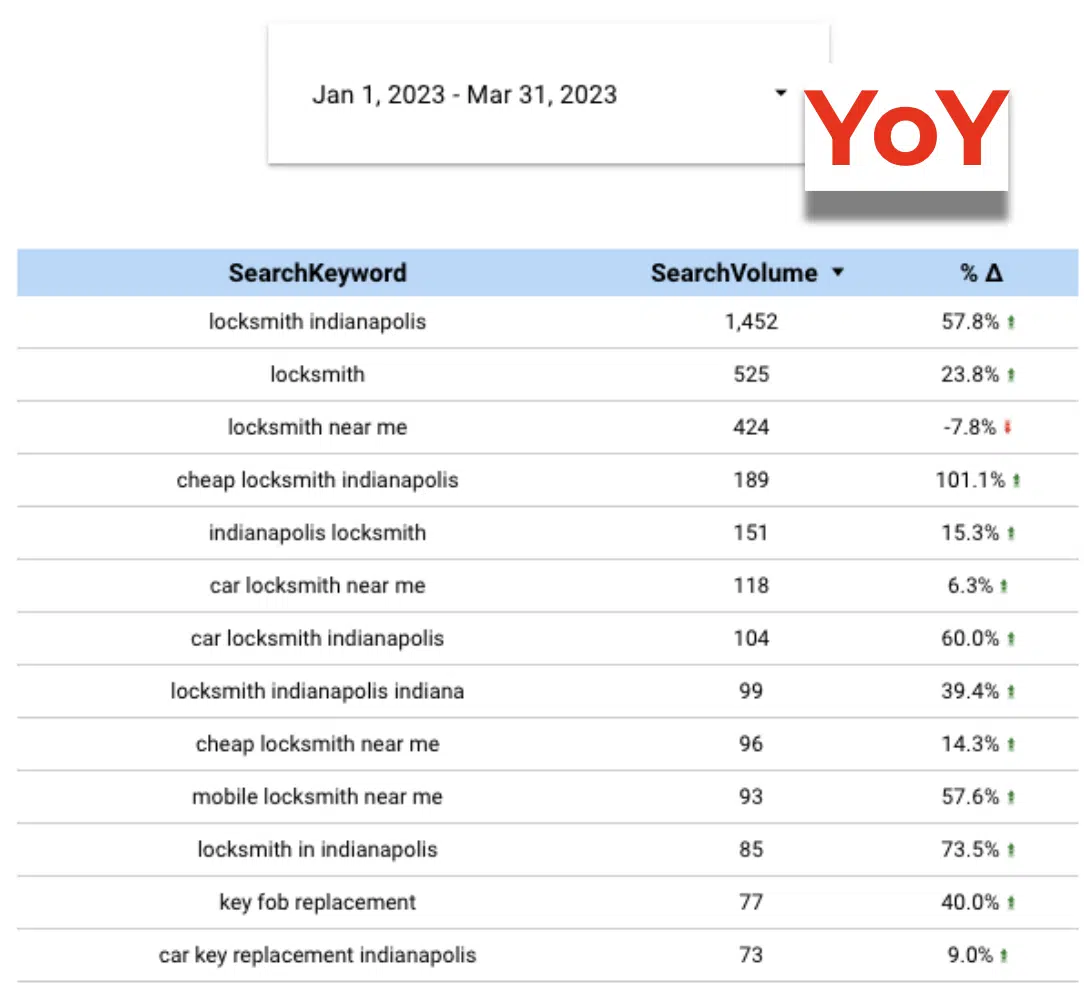

Putting all this into practice
Share of Local Voice is an invaluable metric that can help estimate the true possibilities for improvement for any local keyword.
I’ve encountered many clients who are not local SEO-savvy, and by showing them the maximum SoLV, we are better aligned with the potential impact of local SEO efforts.
Relationships are immensely better when you set data-backed expectations from the start.
Instead of constantly chasing an unachievable unicorn, shifting to an explicit, long-tail keyword strategy can truly impact their bottom line. Education is key here.
Our job as SEOs is to educate and guide our clients, as their time should be spent running a business, and they can’t possibly know all of the ins and outs of our ever-changing industry.
So instead of throwing mud at the wall and hoping it sticks, take a look at what explicit keywords you can be targeting for your listings and work towards optimizing for those.
The best part? Optimizing for explicit long tail keywords does not conflict with optimizing for implicit head terms.
Optimizing content is not a zero-sum game. By focusing on increasing visibility for the keyword we knew we could improve, we could make improvements to all the most important keywords and, most importantly, leads.
Opinions expressed in this article are those of the guest author and not necessarily Search Engine Land. Staff authors are listed here.
Related stories
New on Search Engine Land
https://searchengineland.com/explicit-vs-implicit-searches-local-seo-432516


